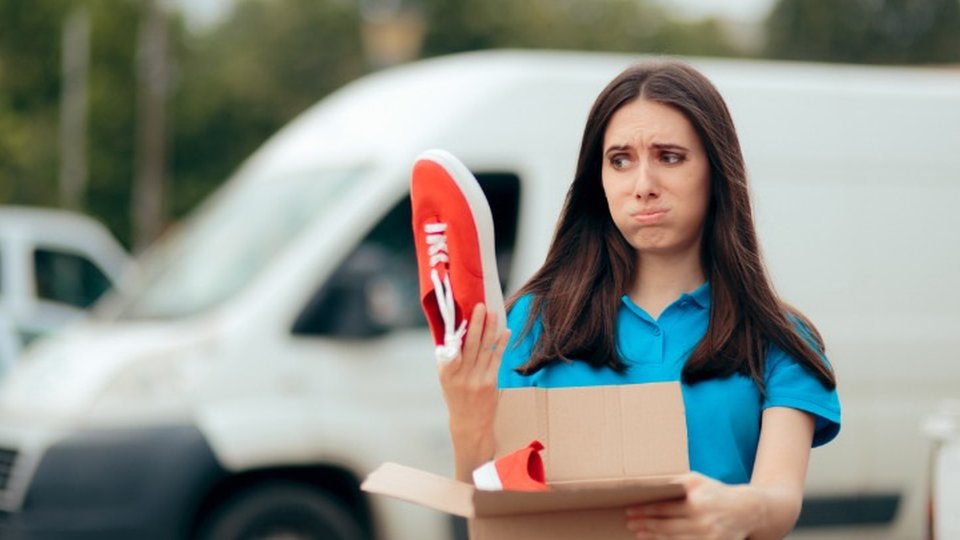Customer Service
Why e-commerce retailers need a chief returns officer
Dan Nevin, chief revenue officer, global retail at Doddle, maps out why retailers should have a chief returns officer as part of the e-commerce team as returns rate can be anywhere from 20% to 40%. Even a small fluctuation in returns can make a colossal financial difference.

December 15, 2020
Do you have everyone you need in your c-suite? It's not as crazy a question as it might sound. The issue of returns often doesn't get the place at the boardroom table that it rightly deserves. However, a small fluctuation in returns can make a colossal financial difference to a retailer. So, it's time to make the argument for a new role in e-commerce — the chief returns officer (or, for smaller businesses, a dedicated role focused on returns).
You may have a fantastic, clear leadership structure, but which one of these leaders owns returns? Chances are they all share some partial responsibility, which often means that nobody truly owns returns. This is where the need for a CRO/returns leader becomes crystal clear. Returns rates can be staggeringly high online — it's not unheard of for them to reach 40%, especially in fashion, but let's say 20% for the sake of generalizing. Imagine you had a business unit worth 20% of revenue with no executive owner and no leader, and you didn't even have particularly good visibility on its performance and impact on customers. That situation wouldn't last very long!
No one in charge of returns overall means there's nobody to quickly identify the root causes of returns and introduce solutions. Issues may go unresolved until they reach levels that require firefighting. In many organizations, it's left solely in the hands of the logistics team, who can only do so much, and may struggle to discover why returns are happening without buy-in and insight from other teams. Additionally, logistics leaders may not have the sway required to effect the changes necessary for improvement, which will often need to happen in other domains like the e-commerce team or merchandising team.
So, the appointment of a CRO/returns-focused executive may be unconventional, but a function with a constant eye on trends in returns can create commercial gains almost immediately, especially when they have the authority and accountability to implement changes.
What does a CRO look like?
It's clear from the details above that a CRO will have a lot on their plate, which is why they need to be working closely with the rest of the C-Suite. Returns are an inherently cross-functional issue and touch upon almost every area of the business, from buying and merchandising, to e-commerce and creative, to logistics and warehousing. All of these functions have elements and processes that can be tweaked or changed to lower returns rates. The ability to set a strategic objective around returns and then effectively marshal all the necessary functions around it starts at the top. And it takes some skills.
Your CRO will need to be:
• Data-driven: The CRO can not only help e-commerce retailers to save potentially millions in dollars by reducing return rates, but he/she can also use data to show the power of returns in both acquiring and retaining customers. They should be continually measuring and tracking returns, generating insights, turning those insights into actions and measuring their impact. Essentially, they will create a continuous feedback loop that pushes a positive downward trend in returns rates, while improving customer experience and loyalty at the same time.
• Influential: While your CRO won't necessarily have the head of logistics or head of merchandising reporting to them, they should have the ability to influence them, as well as many others, in order to bring down returns rates. Getting changes made, whether small modifications or completely new processes, takes an outcome-driven leader who can inspire collaboration and cooperation.
• Hands on: There's not much glamour to be had in rolling up your sleeves and getting the job done, but a CRO needs to be comfortable — even excited about — unraveling the way things work (or don't work) to create solutions. That might be discovering precisely how product photography is designed and processed so that customers see more detail or better color accuracy in the future. Or unearthing ways of working or storage in the warehouse that contribute to breakage. All of these small but important physical improvements are material to driving down the returns rate — and in turn, increasing profit.
Even for a growing business, where returns may not currently be the primary focus, the function of the CRO/dedicated returns executive is also essential for addressing issues of scale. While you focus on acquisition, conversion, and lifetime value of customers, you don't need to be obsessing over every return, of course. However, as your e-commerce business grows, small percentage tweaks in return rates can have a big impact on your bottom line. Moving early and putting in place a strategy that acknowledges returns from the top down will make you stronger, more efficient, and more profitable as you scale up.
Dan Nevin is chief revenue officer, global retail, at Doddle.





